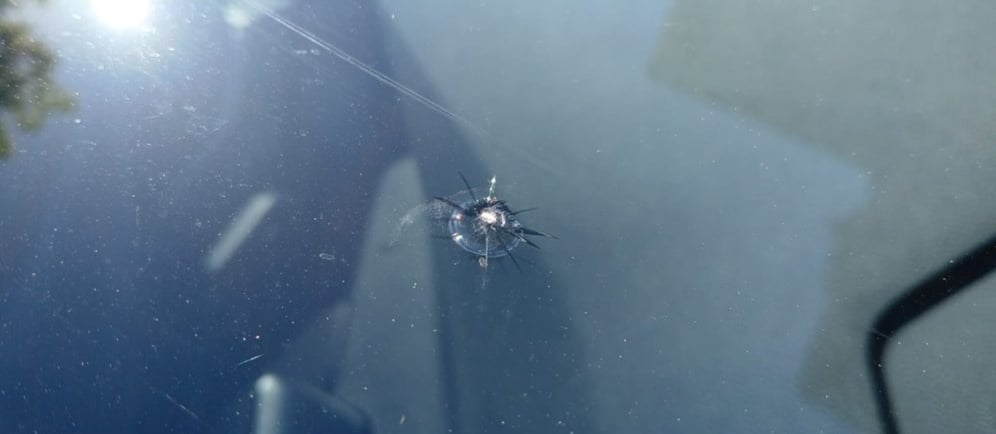Understanding Windshield Damage: When to Repair vs. Replace
WINDSHIELD REPAIR AND REPLACEMENT


Introduction to Windshield Damage
Windshield damage is a common occurrence for vehicle owners, often resulting from a variety of factors such as debris from the road, extreme weather conditions, or even minor accidents. The prevalence of windshield damage underscores the necessity for proper maintenance and prompt attention to any issues that arise. A chip or crack not only compromises the aesthetic appeal of a vehicle but can also pose serious safety risks to the driver and passengers. Understanding the nature of windshield damage is crucial in determining when to repair or replace the glass, which can ultimately affect the integrity and safety of the vehicle.
Modern windshields are constructed using laminated safety glass, which consists of two layers of glass with a layer of polyvinyl butyral (PVB) sandwiched in between. This construction helps prevent shattering upon impact, thereby enhancing passenger safety. However, once damage occurs, the question arises as to whether repair is sufficient or if a complete replacement is necessary. The decision-making process often involves evaluating the extent and location of the damage, as well as considering the visibility impairment and structural integrity of the windshield.
Proper maintenance and regular inspections can play a significant role in prolonging the life of a windshield. Small chips, if addressed promptly, may be repaired without necessitating a complete replacement, which can be both time-consuming and costly. Conversely, certain types of damage can rapidly worsen under varying conditions, leading to complications that justify a full replacement. By understanding the impact of different factors on windshield damage, vehicle owners can make informed decisions regarding the best course of action—whether it be repair or replacement—thereby ensuring their safety on the road.
Types of Windshield Damage
Windshield damage can manifest in various forms, each necessitating a different approach to either repair or replacement. Understanding these types is essential for vehicle owners seeking to maintain their safety and the structural integrity of their cars.
One of the most common forms of windshield damage is a chip, which typically occurs when a small object, such as a pebble or a piece of debris, strikes the glass. Chips can vary in size, from a minor dot to a larger pit. On a visual level, chips often appear as small indentations and may have a distinct pattern radiating from their center. It is crucial to address chips promptly, as they can evolve into cracks if left unattended.
Cracks represent another significant type of windshield damage and are more severe than chips. These are linear fractures that can range from a few inches to several feet long. Cracks are often classified into different categories, including surface cracks, which are superficial, and more serious variants, such as full-thickness cracks that compromise the structural integrity of the windshield. Cracks typically arise from extreme temperature changes, impacts, or pre-existing weaknesses in the glass.
Lastly, scratches constitute a less severe form of windshield damage, often caused by abrasive materials such as sand or tools during cleaning. Scratches do not usually affect the windshield’s overall structural integrity; however, they can impair visibility, especially when light reflects off them. Addressing scratches is essential not only to maintain aesthetics but also to ensure safe driving conditions.
By recognizing these types of windshield damage, vehicle owners can make informed decisions about the necessary steps to repair or replace their windshields, thus promoting safety on the road.
Assessing the Severity of Windshield Damage
Determining the appropriate course of action for windshield damage—whether to repair or replace—begins with a careful assessment of several key factors: size, location, and depth of the damage. Each of these elements plays a significant role in understanding the severity of the issue and ensuring the safety of the vehicle's occupants.
Firstly, the size of the damage is a critical criterion. Generally, chips smaller than a quarter can often be repaired, while cracks longer than a few inches are more likely to necessitate a full replacement. The rationale behind this guideline is straightforward: larger damages compromise the integrity of the windshield, thereby increasing the risk of compromise during impacts or in the event of an accident.
Next, the location of the damage must be evaluated. Repairs are generally feasible when the damage occurs in non-critical areas, such as the outer corners of the windshield. However, if the damage is in the driver’s line of sight, it may obstruct visibility, leading to a greater risk during operation. In such cases, replacement is advisable to ensure optimal visibility and safety.
Lastly, the depth of the damage is vital to assess. A superficial chip may be repaired if it has not penetrated through the layers of the glass. However, if the damage is deep enough to compromise the strength of the windshield or extends into the laminate layer, replacement becomes necessary. It's imperative to consider the structural components of a windshield, as they also contribute to the vehicle’s crash safety features.
In summary, accurately assessing the severity of windshield damage involves evaluating size, location, and depth. Understanding these factors is essential for making informed decisions about whether to repair or replace a damaged windshield, thereby ensuring maximum safety while driving.
The Benefits of Repairing Windshield Damage
Repairing windshield damage offers several notable advantages that can significantly benefit vehicle owners. One primary benefit is the cost efficiency associated with repair versus replacement. Repairing minor chips or cracks is typically much less expensive than replacing the entire windshield, which can save drivers a considerable amount of money. Insurance policies often cover these repairs fully, leading to no out-of-pocket expense for the vehicle owner.
Time efficiency is another significant advantage of windshield repair. Most repairs can be completed in under an hour, allowing drivers to return to their daily routines with minimal disruption. In contrast, a full windshield replacement may require much longer, including the logistics of scheduling an appointment, waiting for the new glass to be ordered, and allowing for proper installation and curing time. Thus, choosing to repair minor damages often reflects a practical choice that aligns with busy lifestyles.
Moreover, repairing windshield damage helps maintain the structural integrity of the vehicle. Windshields play a vital role in the overall safety of a vehicle, providing crucial support to the roof and acting as a barrier during collisions. Addressing minor damages promptly through repair helps ensure that the windshield's integrity remains intact, thus preserving the safety features of the vehicle.
Another key benefit of windshield repair is the restoration of visibility and clarity. Many repairs can effectively restore the optical quality of the glass, allowing drivers to see clearly and safely while driving. In most cases, the repaired area becomes almost invisible, effectively eliminating distractions caused by minor chips or cracks. By choosing repair, vehicle owners not only save money and time but also contribute to their safety on the road.
When to Choose Windshield Replacement
Windshield replacement becomes a necessity in various circumstances, particularly when the extent of the damage exceeds repairable limits. One critical scenario is when a windshield has extensive cracks. Typically, if a crack measures longer than three inches or if there are multiple cracks, the integrity of the windshield is compromised. Such damage can severely impair visibility and increase the risk of an accident. It is essential to understand that a damaged windshield loses its structural integrity, risking the protection that it provides during a collision.
Another significant factor in determining the need for replacement is damage within the driver's line of sight. If cracks or chips are located directly in this area, they can distort vision, which is a significant safety concern. Even if the damage appears minor, it can create distractions, leading to poor driving performance. Thus, any windshield damage that affects direct visibility should prompt a replacement to ensure safe driving conditions.
Furthermore, pre-existing structural weaknesses in the vehicle can exacerbate the impacts of windshield damage. For instance, if a vehicle has been involved in an accident that has compromised the frame or body, any additional damage to the windshield can increase the risk for the occupants. A compromised windshield may fail to deploy properly during accidents, reducing the effectiveness of airbags and other safety features.
In addition to safety concerns, failing to replace a severely damaged windshield can lead to further complications. Exposure to weather elements like rain or snow can worsen existing cracks or chips, making them more challenging and costlier to fix later on. Therefore, assessing the severity of windshield damage is crucial; in many cases, prompt replacement is the best course of action to ensure safety and maintain vehicle integrity.
Cost Comparison: Repair vs. Replacement
When it comes to windshield damage, understanding the financial implications of repair versus replacement is crucial for vehicle owners. The costs associated with each option can vary significantly based on a variety of factors, including the extent of the damage, the type of vehicle, and the specific repairs required. Generally, a windshield repair may cost between $50 to $150, whereas a full windshield replacement can range from $200 to $1,000 or more, depending on the make and model of the car.
For minor chips or cracks smaller than a quarter, repair is typically the most economical choice. These minor damages can often be fixed quickly and are usually covered by insurance policies, contributing to lower out-of-pocket expenses. Conversely, when the damage is extensive—such as a large crack, shattered glass, or impairment of the driver's line of sight—replacement may be necessary. The cost of replacement includes not only the windshield itself but also the labor required for removal and proper installation, which adds to the total expense.
Insurance coverage plays a significant role in determining out-of-pocket costs for the vehicle owner. Some insurance policies may cover repair expenses completely, incentivizing drivers to opt for repair when feasible. However, if a windshield has to be replaced, the cost might be partially covered, resulting in higher personal costs due to deductibles or co-pays.
Additionally, it is important to consider long-term costs when making this decision. A properly repaired windshield can restore structural integrity and visual clarity, prolonging the life of the glass. However, failure to address significant damage can lead to further complications, including potential safety hazards while driving. Weighing these costs and benefits is essential for making an informed decision when faced with windshield damage.
Conclusion and Best Practices for Windshield Care
In conclusion, understanding the nuances of windshield damage is crucial for vehicle owners, as timely intervention can significantly influence safety and vehicle longevity. Recognizing the difference between chips, cracks, and deep breaks is the first step in deciding whether a repair is adequate or if a complete replacement is necessary. Generally, small chips can often be repaired, while larger cracks that compromise the structural integrity usually require a full windshield replacement. Being vigilant in assessing the extent of damage can save both time and resources.
To prevent future windshield damage, adopting best practices is essential. Regularly inspecting your windshield for any signs of wear can help catch issues early. It is advisable to avoid driving too closely to large vehicles, as they can kick up debris. Additionally, parking away from trees or under awnings can minimize exposure to falling branches or hail, which are potential hazards.
When windshield repairs are needed, it is highly recommended to seek professional services rather than attempting a DIY approach. Professionals have specialized tools and expertise that ensure the job is done correctly, thereby maintaining the windshield's structural integrity. Moreover, maintaining a clean windshield not only enhances visibility but can also prevent potential damage stemming from dirt and debris accumulation that can exacerbate existing imperfections.
Ultimately, proactive care and awareness go a long way in safeguarding your windshield against unexpected damages. Emphasizing the importance of a well-maintained windshield not only ensures a safer driving experience but also helps preserve the vehicle's value over time. Regular maintenance checks, prompt repairs, and mindful driving practices collectively contribute to minimizing the risks associated with windshield damage.
